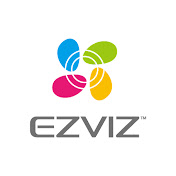CCTV System
In today’s security-conscious world, investing in a quality CCTV system is a smart decision for both homes and businesses. However, navigating the vast array of options can be overwhelming. This guide will help you understand the key components and considerations before making your purchase.
Camera Types
Analog Cameras
- Pros: Lower initial cost, simple installation
- Cons: Lower resolution, limited features
IP Cameras
- Pros: Higher resolution (2MP-12MP), advanced features like motion detection, remote access capabilities
- Cons: Higher cost, may require more network knowledge
PTZ (Pan-Tilt-Zoom) Cameras
- Pros: Can cover larger areas with movement capabilities, zoom functionality
- Cons: More expensive, moving parts may fail over time
Dome Cameras
- Pros: Discreet appearance, vandal-resistant options, suitable for indoor use
- Cons: Limited range of vision compared to bullet cameras
Bullet Cameras
- Pros: Better for long-distance viewing, weather-resistant options, visible deterrent
- Cons: More noticeable, potentially easier to tamper with
Cable Types
Coaxial Cable (RG59, RG6)
- Pros: Reliable signal transmission for analog systems, less susceptible to interference
- Cons: Limited distance capabilities (usually up to 500ft), doesn’t carry power
Cat5e/Cat6 Ethernet Cable
- Pros: Suitable for IP cameras, can handle PoE (Power over Ethernet), longer distance capabilities
- Cons: More susceptible to interference without proper shielding
HDMI/VGA Cables
- Pros: High-quality direct connections for monitors
- Cons: Limited to short distances, typically for connecting NVRs/DVRs to displays
Fiber Optic
- Pros: Excellent for long-distance installations, immune to electromagnetic interference
- Cons: More expensive, requires specialized equipment for installation
Power Supply Methods
Direct Power (Individual Adapters)
- Pros: Simple to understand, easy replacement if one fails
- Cons: Requires multiple outlets, messy installation, no central backup
Centralized Power Supply
- Pros: Cleaner installation, easier to add battery backup
- Cons: If the central power supply fails, all cameras go down
Power over Ethernet (PoE)
- Pros: Single cable for both power and data, cleaner installation, easier to implement backup power
- Cons: Only works with compatible IP cameras, requires PoE switch or injector
Solar Power Options
- Pros: Works in remote locations, environmentally friendly
- Cons: Weather-dependent, higher initial cost, requires battery storage
Recording Systems: NVR vs DVR
Digital Video Recorder (DVR)
- Pros: Works with analog cameras, generally lower cost
- Cons: Limited scalability, lower resolution support
Network Video Recorder (NVR)
- Pros: Works with IP cameras, higher resolution support, more advanced features
- Cons: Higher cost, requires more network knowledge
Hard Disk and Storage
Storage Capacity Considerations
- Entry-level: 1-2TB (good for 2-4 cameras at medium quality)
- Mid-range: 4-6TB (suitable for 4-8 cameras or higher quality recording)
- Professional: 8TB+ (necessary for multiple high-resolution cameras or longer retention)
Surveillance-Grade HDDs
- Pros: Designed for 24/7 operation, better durability
- Cons: More expensive than standard drives
Cloud Storage Options
- Pros: Off-site backup, accessible from anywhere
- Cons: Ongoing subscription costs, dependent on internet connection
Playback Devices and Resolution
Minimum Recommended Specifications
- Monitors/TVs: At least 1080p resolution for modern systems
- Computers: Dual-core processor, 4GB RAM, dedicated graphics card for multiple camera monitoring
Display Types
- Dedicated Security Monitors: Designed for 24/7 operation, often include multiple inputs
- Standard Monitors/TVs: More affordable, but may not have the durability for constant operation
- Mobile Devices: Convenient for remote monitoring, but limited screen size
Remote Monitoring
Mobile Apps
- Most modern systems offer smartphone apps for iOS and Android
- Look for systems with free apps that don’t require subscription fees
Web Access
- Browser-based monitoring allows access from any computer
- Consider systems with secure HTTPS connections
Bandwidth Requirements
- Ensure your internet upload speed can handle your remote viewing needs
- Consider systems with adaptive streaming for varying connection speeds
Brand vs Non-Brand Systems
Brand Name Systems
- Pros: Better reliability, customer support, warranty service, regular firmware updates
- Cons: Higher cost, sometimes proprietary components
Generic/Non-Brand Systems
- Pros: More affordable, often similar specifications on paper
- Cons: Questionable reliability, limited support, infrequent updates
Key Factors to Consider Before Buying
- Budget: Determine your total budget including installation costs
- Area Coverage: Map out the areas you need to monitor
- Resolution Needs: Higher resolution means better detail but requires more storage
- Lighting Conditions: Consider day/night capabilities for outdoor cameras
- Weather Resistance: Check IP ratings for outdoor cameras (minimum IP65 recommended)
- Scalability: Choose a system that allows for future expansion
- Installation: DIY vs professional installation considerations
- Warranty and Support: Check warranty periods and available technical support
- Local Regulations: Some areas have restrictions on surveillance camera placement
- Network Infrastructure: Ensure your network can handle the additional load of IP systems
By considering these factors, you’ll be better equipped to choose a CCTV system that meets your security needs while staying within your budget. Remember that investing in quality components often pays off in reliability and longevity


